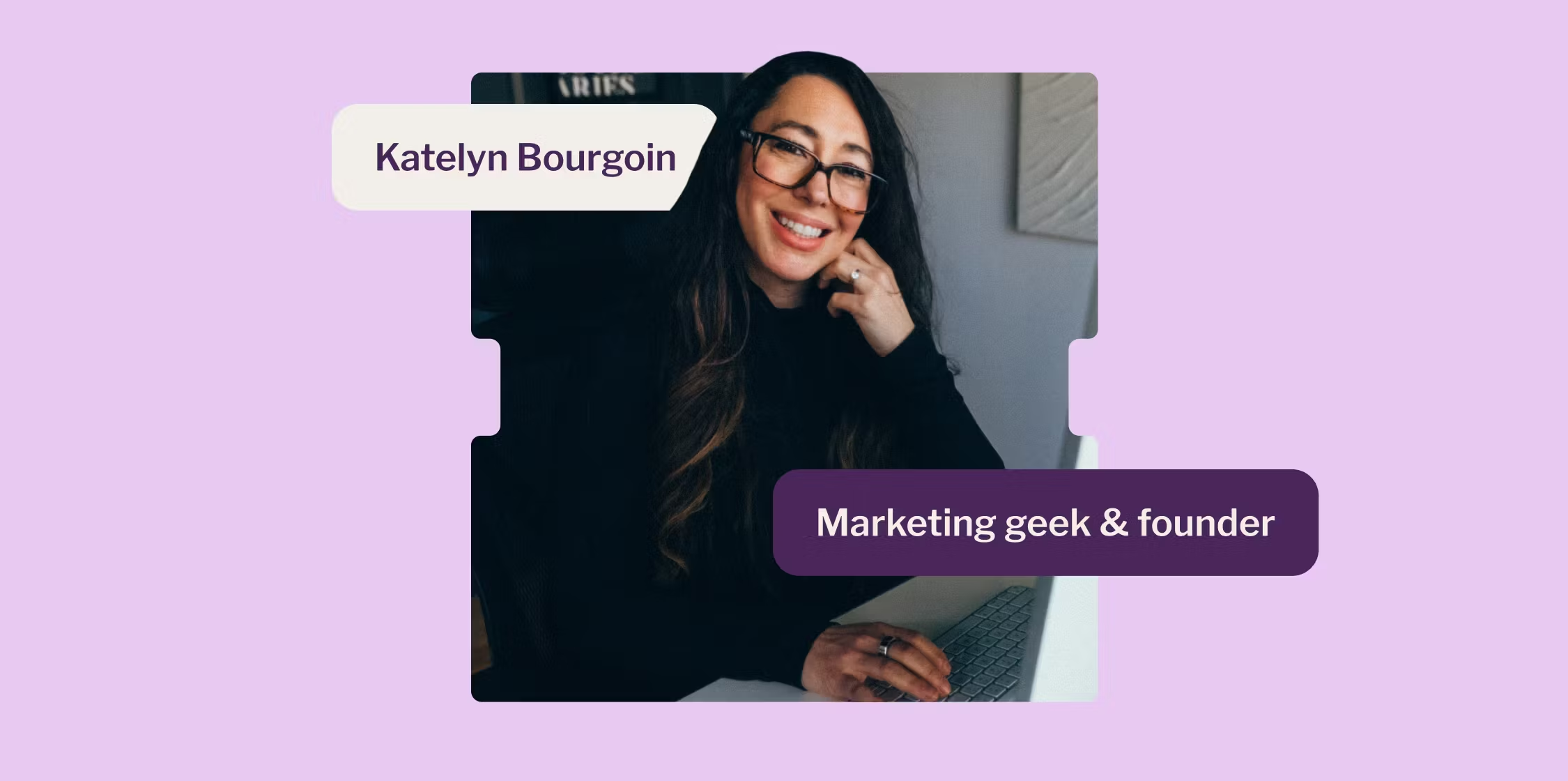Self-proclaimed marketing geek Katelyn Bourgoin runs the popular “Why We Buy” newsletter and sells digital products to help people sell more by understanding the science of why people buy.
This is how she uses Kit to scale her newsletter business and develop the kind of relationship with her audience that led to one of her digital products making $116,000 in six minutes.
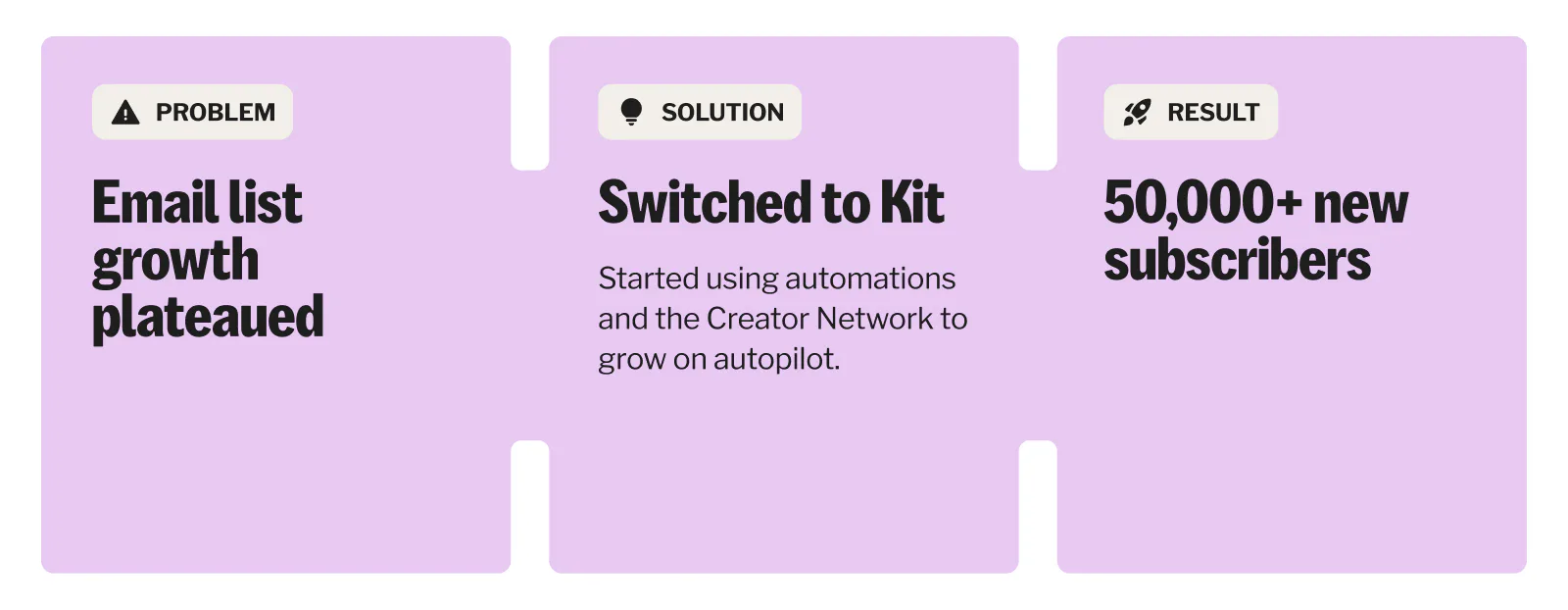
“Before, almost all of my list growth came from my personal social media. So if Katelyn doesn’t tweet, the list doesn’t grow. But now, because of the Creator Network, I have amazing opportunities to get discovered.”
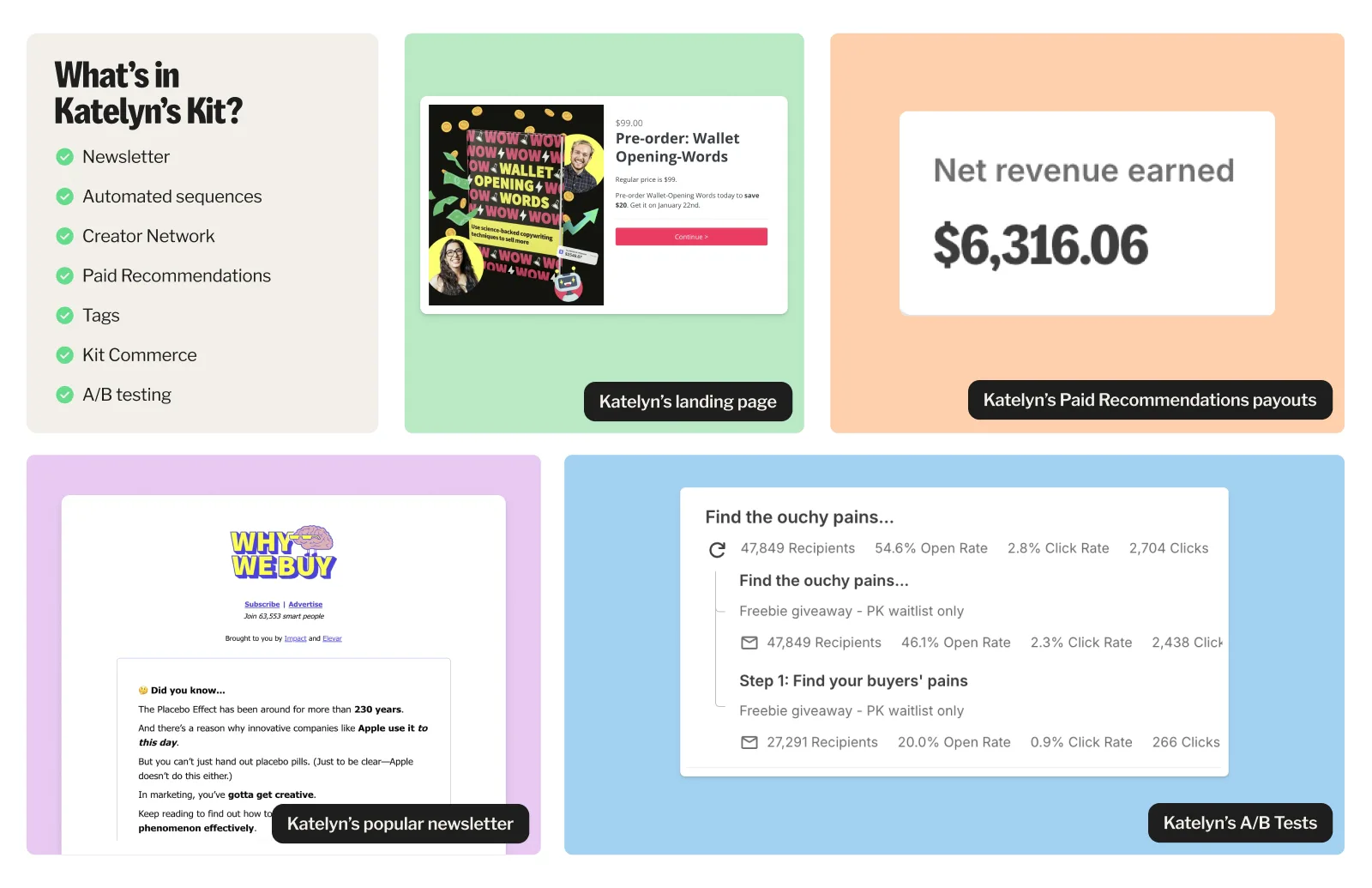
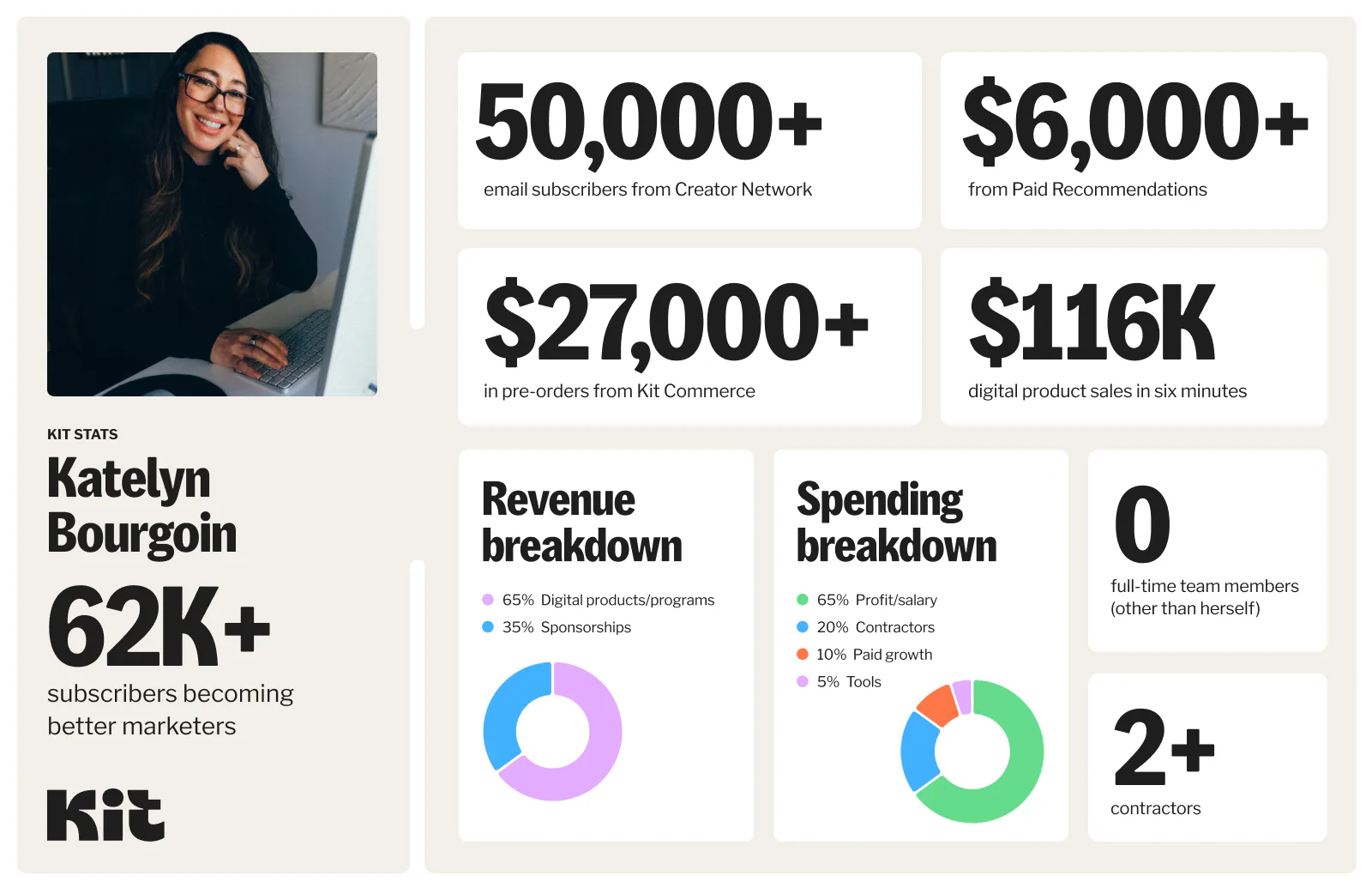
Katelyn’s Kit Story
Before Katelyn Bourgoin was a creator running a successful newsletter business, she was the founder of a promising VC-backed startup. Forbes said it would be the next LinkedIn for women.
But the company struggled to find product-market fit, and she had to shut it down and go personally bankrupt.
I was so burned out after that. I was really just trying to figure out what was next. And because I was so broken from that experience, I couldn’t imagine taking a job because I didn’t feel like I had anything to give.
She decided to consult. One of her investors was so impressed with the way Katelyn ran marketing for her startup that he hired her to help other companies he invested in that were struggling with their marketing.
I would sit down with the founders of these companies, many of whom had raised tens of millions of dollars in funding and had very well-known high-profile customers, and I’d ask them the one thing I needed to know as a marketer: “Tell me about your customers.”
They just didn’t know. There was this trend with all of them. They didn’t know nearly enough about their customers.
Katelyn saw an opportunity.
It got me really excited about this problem, that companies that want to grow need to understand their customers.
She decided to start an insights agency to assist big companies with their marketing efforts. To help market the agency, she started a newsletter about buyer psychology called Why We Buy.
She didn’t know then that the newsletter would become the foundation for her business.
Katelyn initially thought of the newsletter as a marketing channel only, not a way to make money directly. But that changed when a brand she loved reached out and offered her $1200 a month to be the primary sponsor of her weekly newsletter to her then 9,000 subscribers.
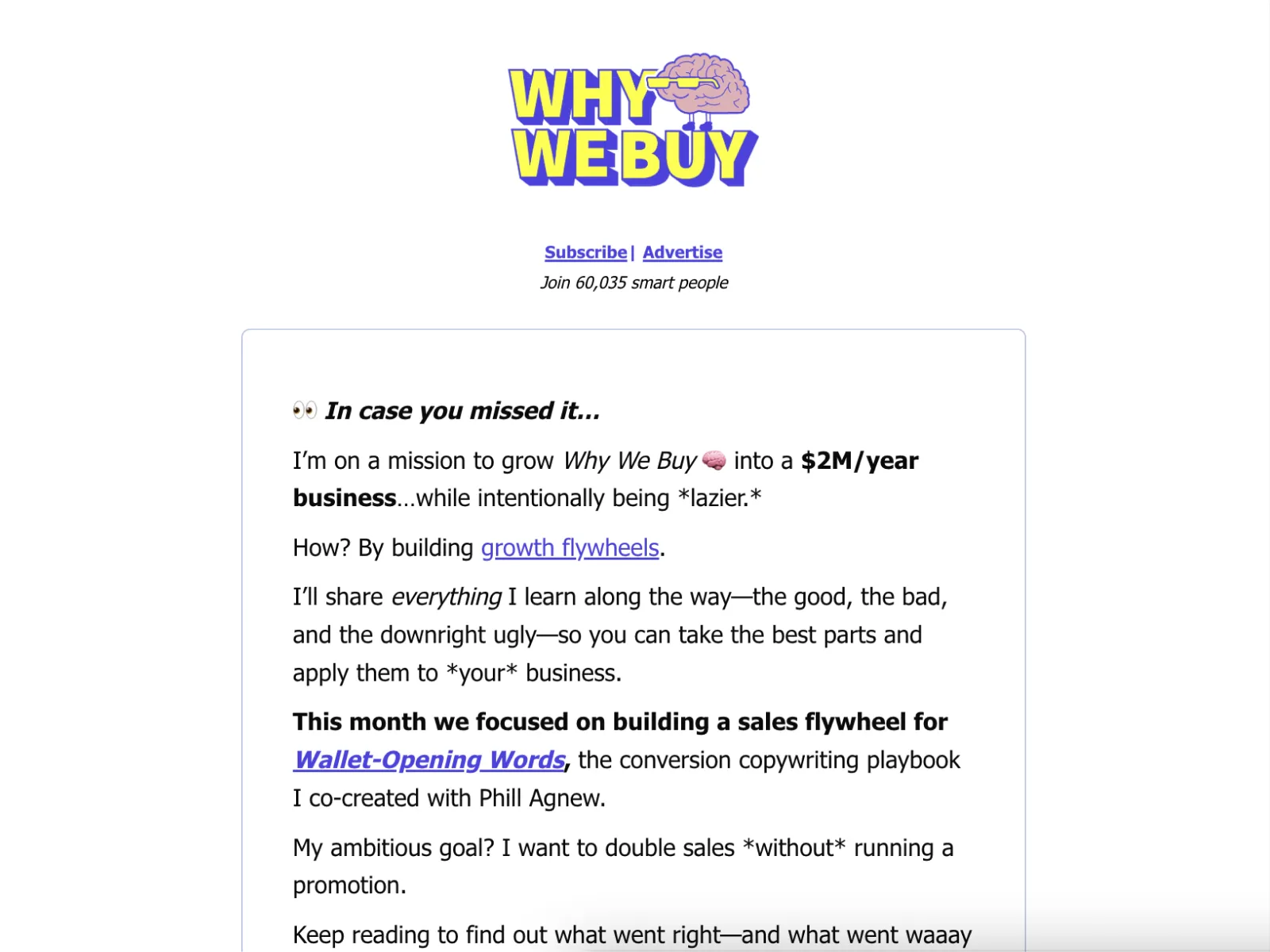
Around that time, she also found out she was pregnant, and the idea of a newsletter business sounded better for her next season of life than building an agency.
I threw away the idea of the insights agency, went all in on the newsletter, and started creating a few specialized products for that audience to help them better understand their customers.
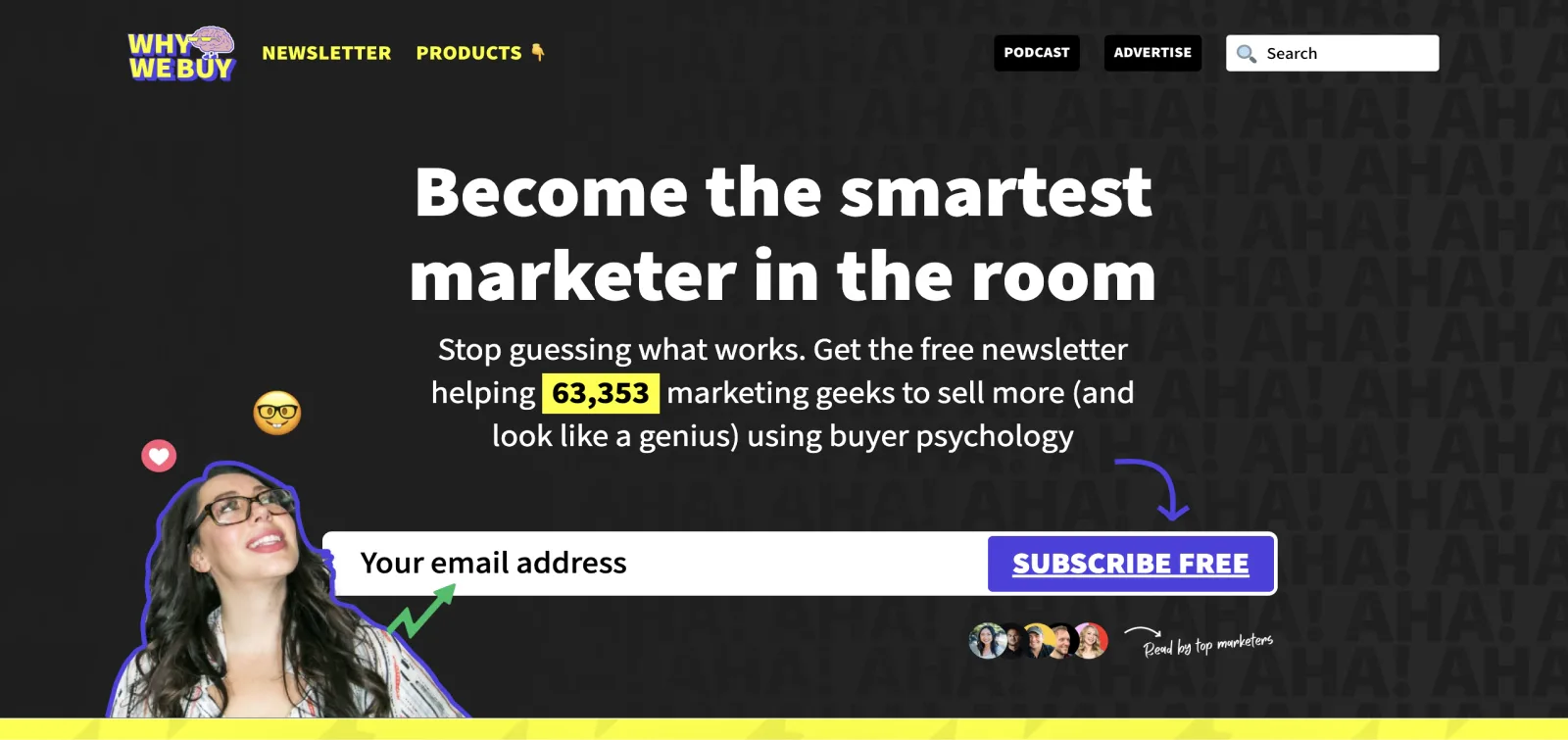
Katelyn’s new business model worked. There was just one problem: she wanted to keep growing her audience but was hitting a wall, especially with her business being just her and one virtual assistant. She wasn’t ready to make big hires, but she was ready to grow her subscriber list and her income.
That’s when she switched to Kit.
Katelyn’s Kit strategies
1- Create a personalized welcome sequence based on pain points
Since switching to Kit, Katelyn says:
We’re in this exciting growth mode where we’re focused on building flywheels in the business. Email is the main element because it connects all the things we’re doing.
We recently launched a new onboarding sequence to identify pain points and have a targeted welcome sequence based on those pain points.
It’s been hugely successful. We saw a 30 percent growth in the sale of the two products we feature in those sequences over the last three months.
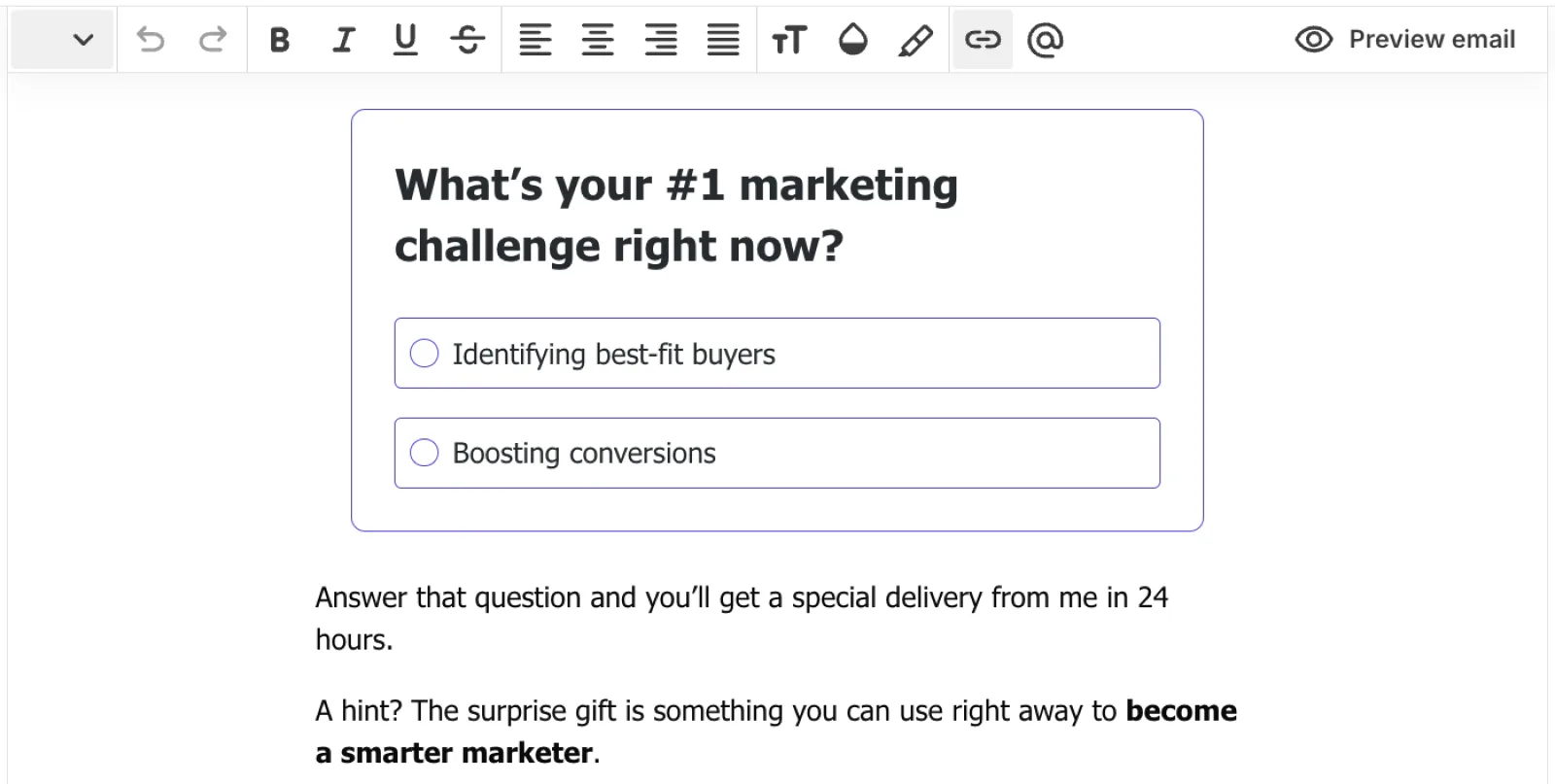
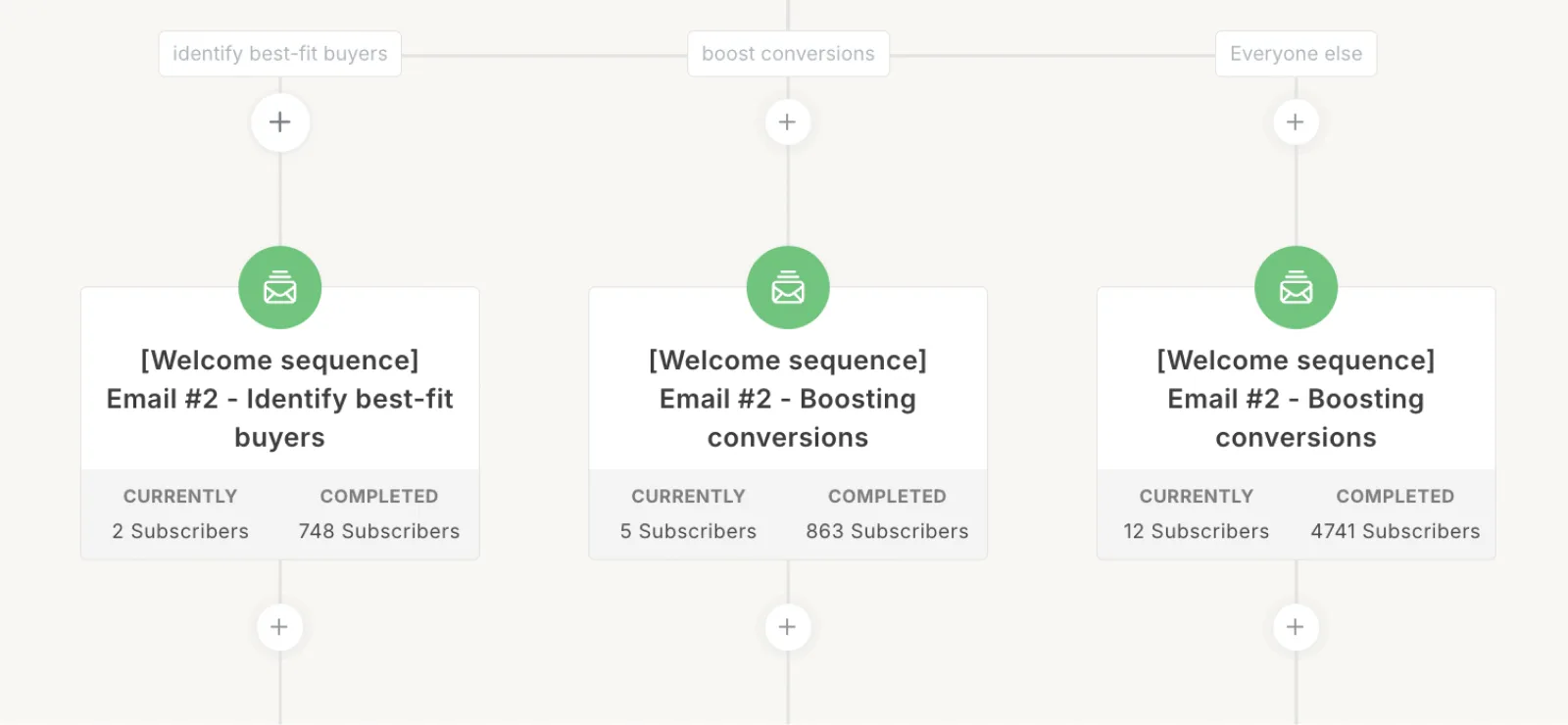
Katelyn says this personalized welcome sequence is “having the biggest direct impact on revenue growth,” and likens it to walking into a stranger’s house:
Imagine you’re greeted with a drink at the door, and there’s this beautiful spread put up for you, and you feel valued. I feel the same way about the welcome sequence for a newsletter.
A lot of times, you’ll sign up for a newsletter, and you’ll get pitched right away or thrown into the regular newsletter.
But I thought about how do we create this really wow-worthy experience and curate this really great first impression?
We can now do that with Kit, whereas before, our welcome sequence was more of an afterthought.
Katelyn especially loves this personalized approach because, though possibly surprising for a self-proclaimed “marketing geek,” she actually hates sales.
I love inbound marketing and I love brand marketing. In my ideal world, I never have to pitch because they just come to us. By the time they read our sales page, they already know about the brand and they’re already interested in working with us.
She deeply appreciates the work of outbound sales, but says she prefers letting her marketing do most of her sales for her.
Marketing feels like an invitation. And I like to put out invitations and let people accept them.
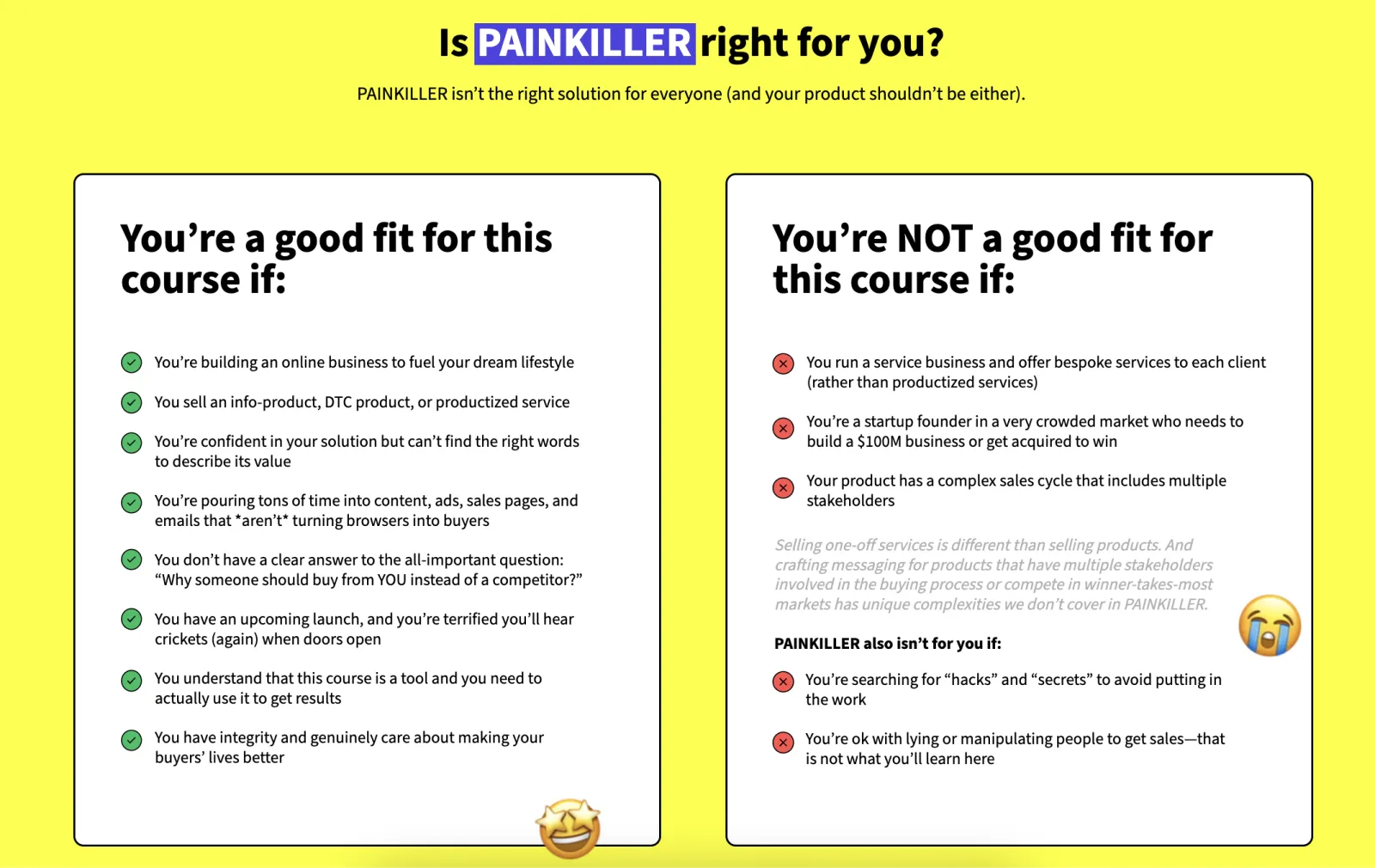
Take action: Use Kit’s Automations to set up your welcome sequence.
2- Run wait lists and pre-sales to test your product ideas
In addition to paid newsletter sponsors, Katelyn’s business model also includes selling digital products she creates based on her newsletter audience’s questions and problems.
But before she builds those products, she tests them using Kit to run waitlists and pre-order campaigns.
I always like to test things before I actually go out and build them. If there’s not a lot of demand for the thing you’re building, you don’t want to spend months and months creating this new program if people don’t want it.
In 2023 Katelyn tested a new digital product idea—a 34-day group audience building challenge called Un-ignorable. She and Demand Curve partnered on the product, and Katelyn created a waitlist and then sent a pre-order sales email only to the people on the waitlist.
We had 50 spots available, and we sold those 50 spots in under an hour.
When they officially launched, the waitlist had over 3,000 people on it. Katelyn hoped they could sell all 200 available spots in a few days. But that’s not what happened.
The product sold out in six minutes and generated $116,000.
(The most recent launch sold out in 3 minutes.)
3- Use the words your customers use to describe their problems
Katelyn says paying attention to the words people use when talking about their frustrations and putting those words into the sales copy is what also helps them sell out so fast.
One of the best parts of building an audience is I get to have direct interaction with the people who are prospects for new products we’re building.
Building an audience gives you this amazing insight into your customers that you don’t get otherwise.
We just had a ton of insight into that audience and then used words and phrases that people actually use in conversations.
And then I sat down and asked myself: What do people really want? What is the pain, and how do I turn that pain into a promise?
4- Collect and share social proof
Katelyn also uses social proof, which she says helps a lot. For the Un-ignorable launch, both she and Demand Curve had helped people achieve the results they were promising in the past, so they were able to showcase evidence about how they could deliver.
That made the messaging so much stronger.
Katelyn prioritizes gathering social proof and incorporates it into her product flywheels. For example, at the end of her digital product Wallet Opening Words (which she pre-sold using Kit Commerce), she offers readers exclusive bonus content in exchange for a testimonial.
She says those testimonials are where she finds the best inspiration for refining her future sales page and email copy, which then helps her launch again and again.
Take action: Read our guide on how to ask for a testimonial.
5- Use the Creator Network to grow your list without social media
When Katelyn switched to Kit, she had about 20,000 subscribers on her list.
But that changed when she joined the Creator Network.
We’re close to 60,000 subscribers now, and the Creator Network has been a game changer in terms of list growth.
Before almost all of my list growth was coming from my personal social media. So if Katelyn doesn’t tweet, the list doesn’t grow.
But now, because of the Creator Network, I have amazing opportunities to get discovered.
Katelyn uses both Recommendations—where any creator can choose to recommend her—and the Partner Network, where she pays creators who are a perfect fit to recommend her newsletter.
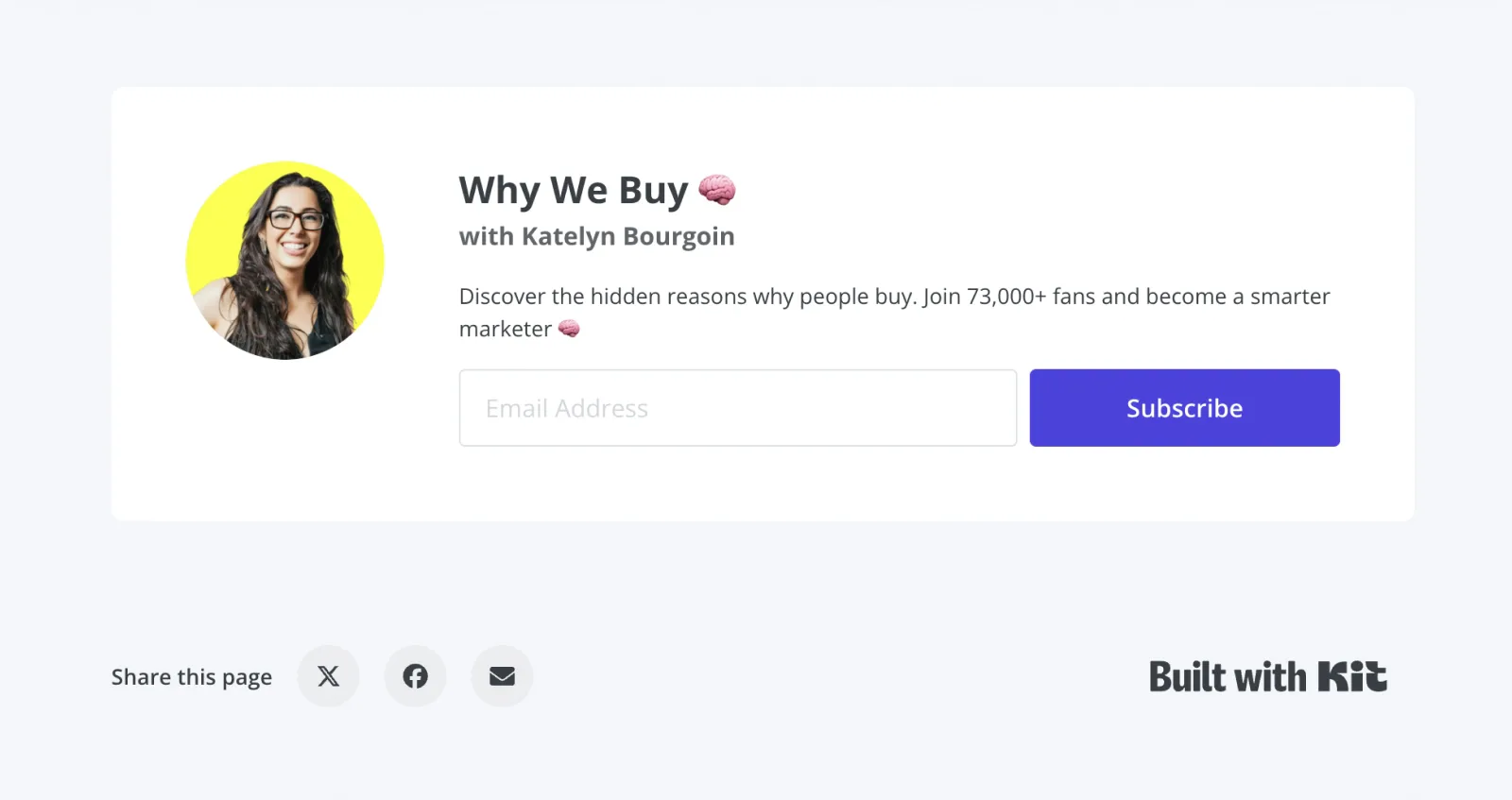
There’s always a sense of competitiveness in the business world where people think that if a competitor is winning, they’re losing.
I think in the creator world, we recognize the symbiotic relationship.
My friend Eddie Shleyner is an amazing copywriter with a huge email list, and he just wrote me a couple of days ago and said, “I just moved over to Kit, and I saw that you’re on the Creator Network,” and now we recommend each other.
It’s such an easy way for Eddie and me to collaborate, which would have probably taken a lot more effort on both of our parts previously
Now it can just be like, yeah, I’m going to go into Kit, and three clicks later, I’m going to support Eddie and vice versa. So it makes it really easy.
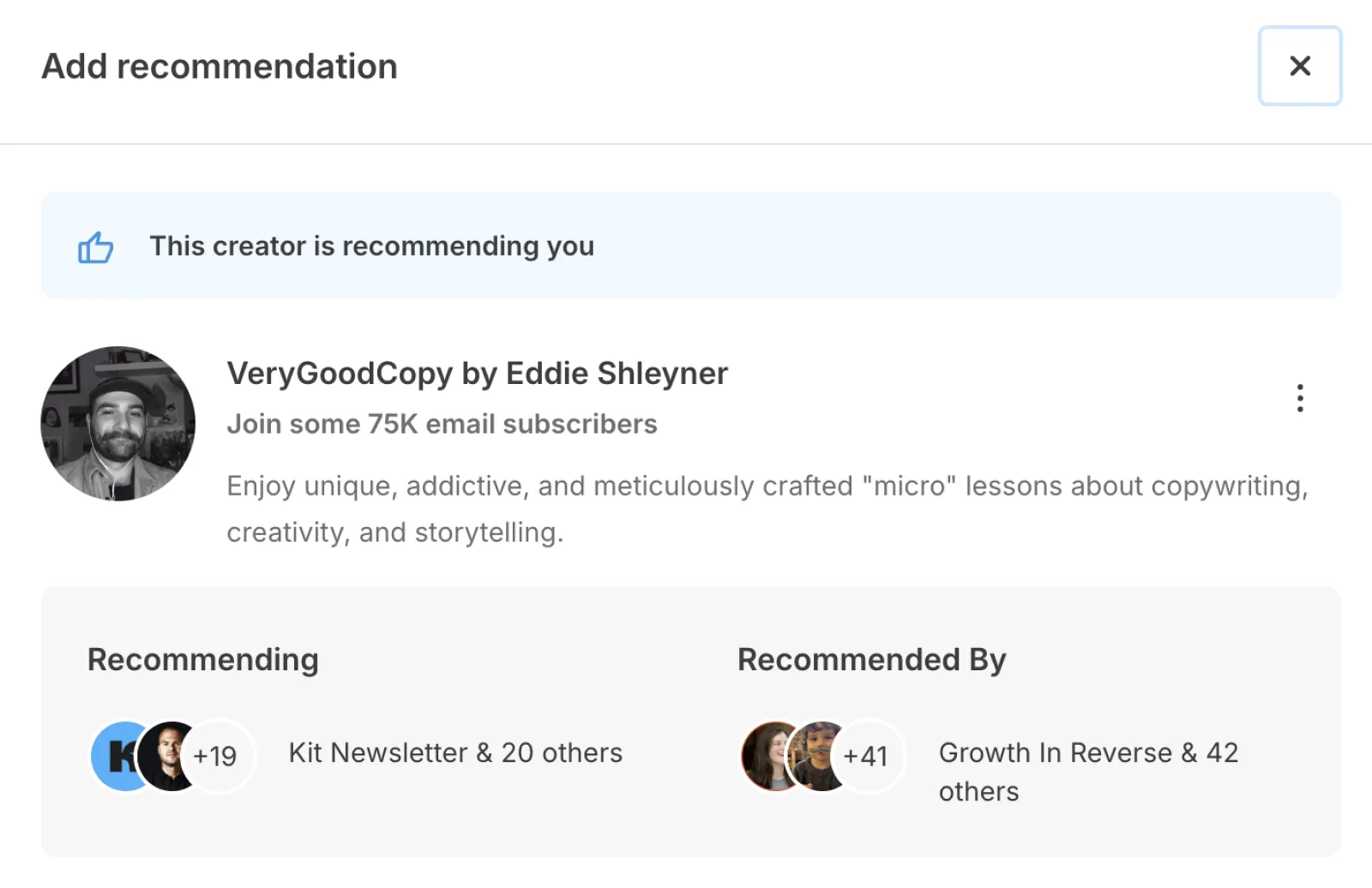
Katelyn’s Kit Subscribers
After her failed VC-backed startup experience, Katelyn is grateful to have a thriving business doing something she really loves.
Recently I went to the Spark Together conference. It was a lot of fun and really cool to be in the room with 300 marketing geeks like me.
But what surprised her the most was how many people knew who she was because they read her newsletter.
Most of the time, you’re going through life, and nobody knows you. Going to a place where I heard “I read your newsletter” over and over was crazy.
When building an audience or writing a newsletter, you see one big total subscriber number. But those are real human beings. It’s landing in their real inbox.
So being in this place where I was able to see these are the people’s inboxes who this is going to, that was a cool pinch me moment.
She loves hearing from her subscribers too, and her favorite email replies are when people tell her they tried a strategy from her newsletter.
Rory Sutherland says, “Marketing isn’t about being right. It’s about being less wrong.” If I can help people be less wrong and come up with ideas that they can be testing and trying, that makes me excited.
Disclosure: From July-September 2024 Katelyn was part of a content marketing partnership with Kit.
If you found this case study helpful, please support Katelyn by joining her newsletter.
